2022 Acura NSX Type S First Drive: An Overdue Victory
What is it like to follow up a magnum opus? If you create something that achieves universal praise from critics and peers alike, how can you rekindle the magic you harnessed in the one moment everything came together and produced your greatest work? Different artists throughout history have had different responses; Wolfgang Mozart became depressed in his later life as he struggled to rekindle the success of his teens – when he had already become the most famous pianist in Western Europe – and yet somehow still managed to write The Magic Flute in his final year. He rediscovered how to create masterpieces anew, even after a slump that nearly ruined him.
Acura has needed to answer its own version of this question in a burning way. The brand launched on American shores in 1986 with a medley of sports coupes and sedans. It was a way for Honda to enter the luxury performance market, with cars like the Integra and Legend taking aim at the dominant German benchmarks. But in 1990, Acura set its sights higher than the BMW M3 or the Mercedes-Benz 190 E: just four years after its debut as a company, it released the Ferrari-benchmarked Acura NSX.
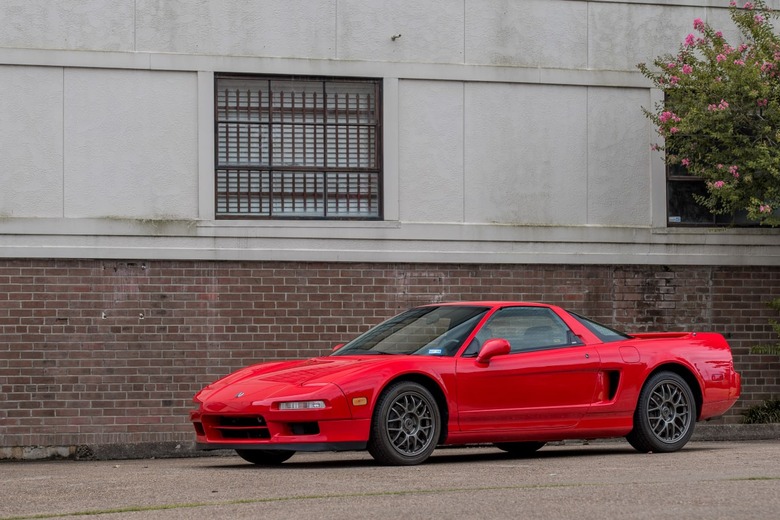
Immediately upon the arrival of the VTEC-equipped, aluminum-monocoque, handbuilt mid-engine creation, Acura genuinely redefined sports cars in a way no Japanese automaker had since Datsun's 240Z. It received nearly universal acclaim. Contemporary reviews glowed with praise; Gordon Murray himself daily-drove one and used the NSX as his handling target for the legendary McLaren F1.
If Nissan's Skyline GT-R was the Godzilla of its generation, dominating race tracks and leaving a trail of podiums in its wake, then the NSX was the mech sent to fight him. A perfect blend of revolutionary technology and pilot involvement to battle cars vastly out of its weight class and become a hero doing it.
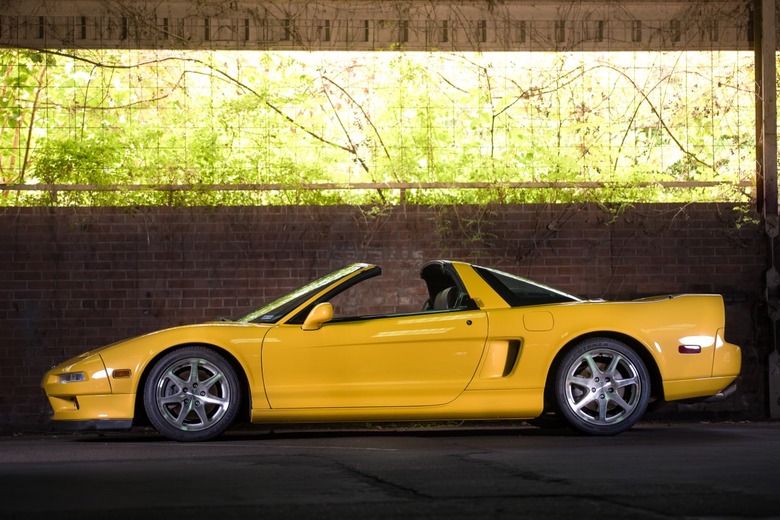
Sadly, of course, good things cannot last forever, especially in the automotive industry, and Acura axed the NSX in 2005. No replacement arrived for over a decade, and Acura's showrooms languished without a halo. Finally, in 2016, the second-generation NSX hit dealerships, again promising to put Ferrari on notice for a fraction of the price and double the engineering budget.
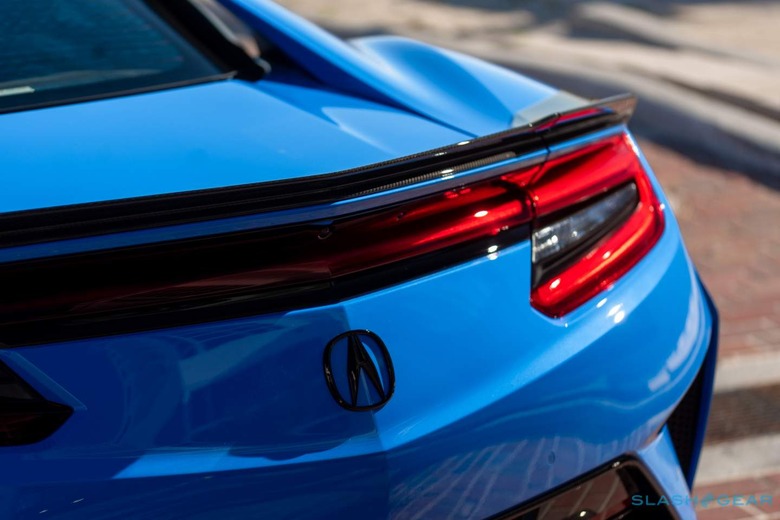
In true NSX form, it was an instant heavy-hitter on the bleeding edge of technology. Where the previous generation used trick cams on its naturally aspirated V6 and added lightness to stay ahead of the supercar competition, the second-generation featured a tri-motor hybrid-electric all-wheel-drive system combined with a twin-turbo 3.5L V6, together pumping out 573 horsepower to all four corners. The whole drivetrain is extremely advanced, especially for a sub-$200K supercar that still drives and functions like any other Honda around town.
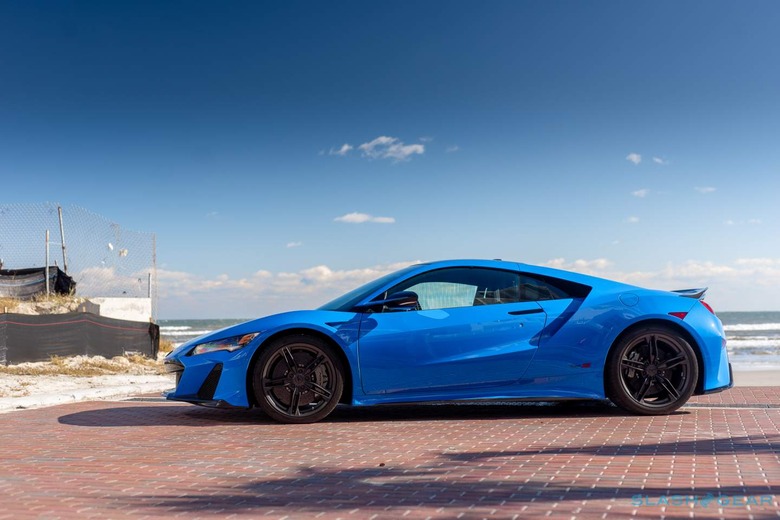
Yet, in less-true-NSX-form, the follow-up never could quite match the opus. The new NSX is generally well-liked by most reviewers (including our own Chris Davies), but it's not an icon for a new generation of supercars like its predecessor was. The technology is still cutting edge, but it was decried by many as a further separation between driver and emotion; less Senna's infamous heel-toe work through the corners of Suzuka than, essentially, a very fast version of an Insight.
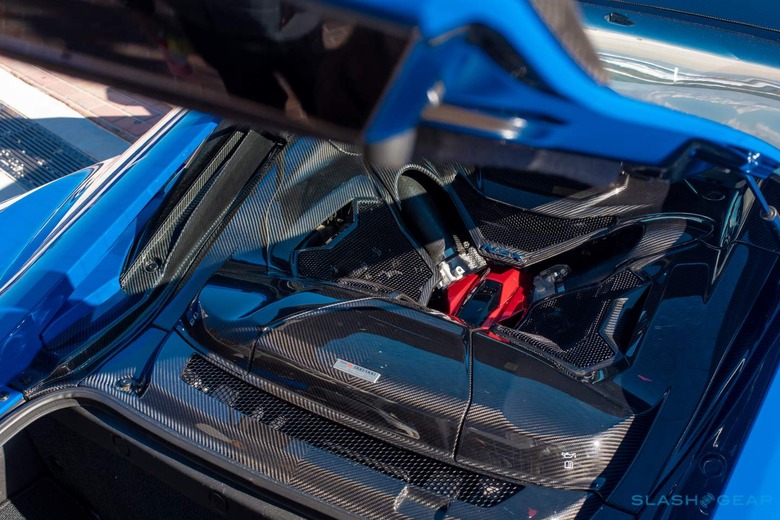
And to listen to Acura's initial marketing push, you'd be forgiven for thinking that's what the automaker though it was, too. Advertisements and press releases alike demonstrated the finer points of rotisserie construction. Where the initial NSX launch chased dreams, the new NSX offered a vision of precision-crafted performance that lost the aspirational underdog ambitions of its original namesake.
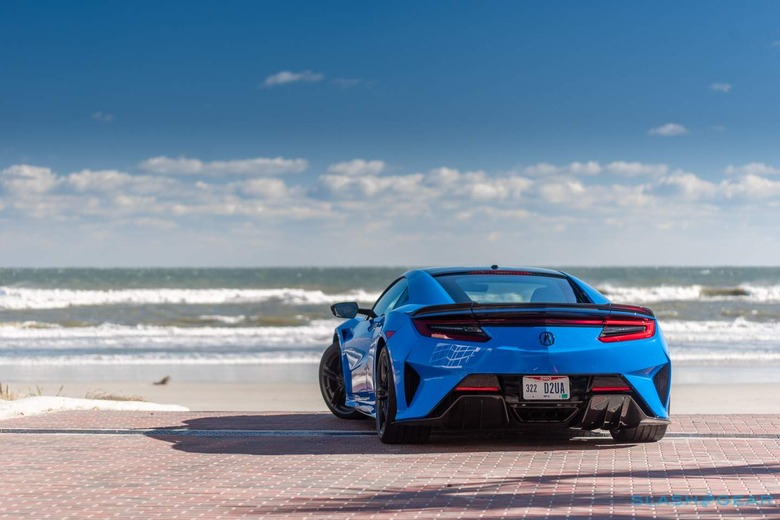
Whether the NSX drove in a truly uninspiring fashion is completely beside the point. Acura themselves did not seem to understand what the original NSX had meant. They had built a successor that in the eyes of the public was a very pricey tech demo platform with a polite exhaust note. This may be unfair, yes, but it also means that Acura would not make this mistake again for the final send-off for the second-generation NSX.
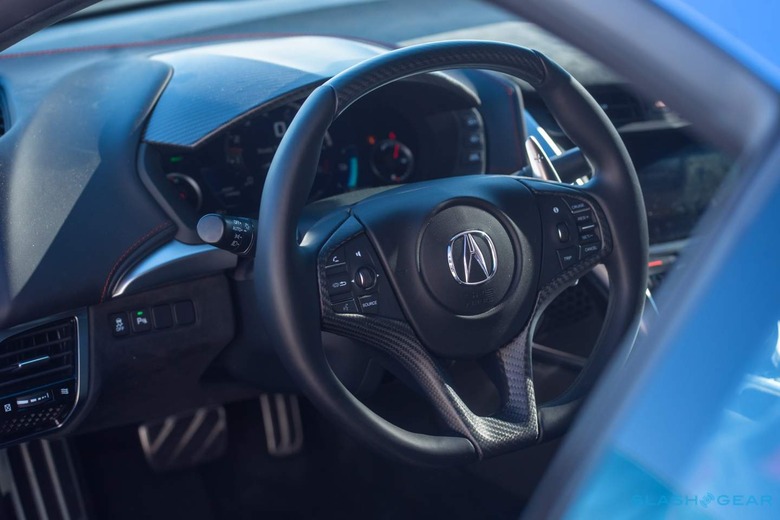
Enter the 2022 NSX Type S. Intended as a finale for the second-generation, only 350 will be produced – 300 for North American shores, and sorry, they're all sold already – and in true Type S nameplate fashion, everything is dialed to 11. This time around, though, instead of celebrity-centered ad campaigns or a focus on engineering, Acura has doubled down on the image of the NSX as the biblical David; it is the scrappy underdog meant to inspire a generation of bedroom-wall posters.
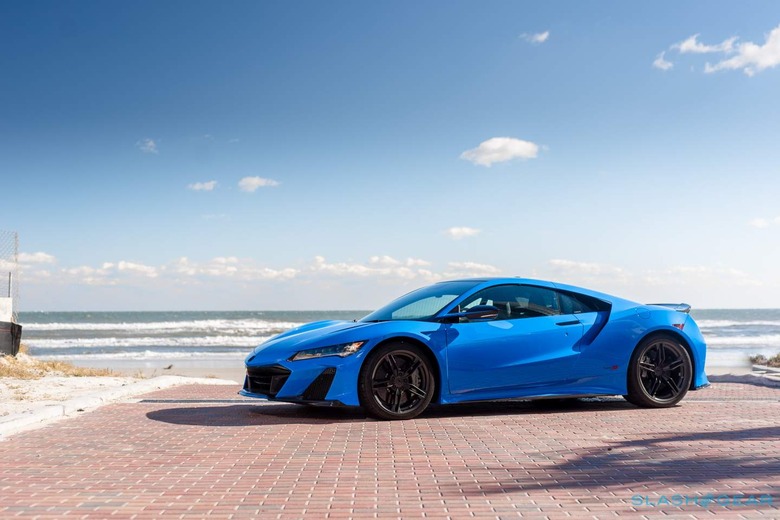
Yes, the new Type S has increased boost by 0.9 PSI through its twin-turbos, adding 27 horsepower over last year's NSX to push it to a total 600 HP from its hybrid V6 and trio of electric motors. It holds 6% more lateral grip thanks to its newly revised suspension tweaks and specially developed Pirelli P Zeros. The nine-speed dual clutch transmission has software tweaks for faster downshifts and the electric motors have new code that allows them to yank the 3,800 lb battery-laden chassis out of corners with more violence. It laps Suzuka two seconds faster than last year's model and set the production car record at Long Beach. These are all great specs...
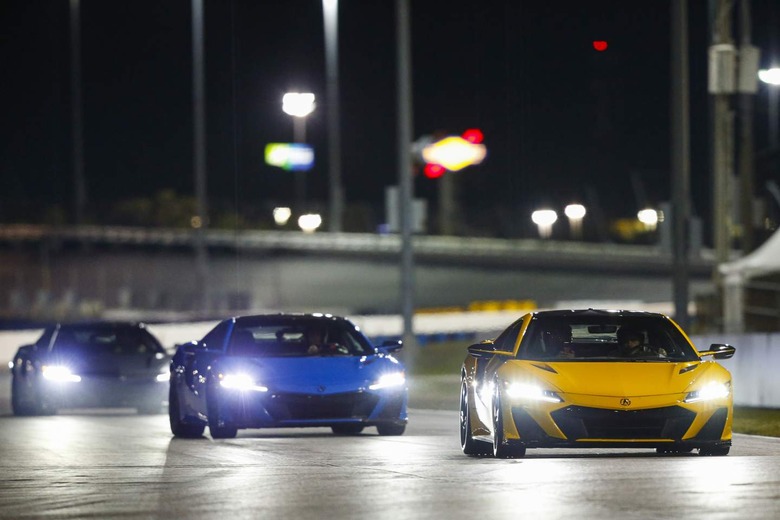
...but more important than any of this, it's throatier. Louder. The steering feels more direct. The shifts are more violent. The hybrid system is designed to rotate the chassis through corners in a way that makes the driver feel like they are Senna at Suzuka, loafers or not. And the marketing and direction that Acura has chosen for this final, greatest version demonstrate it finally understands that matters more than any numbers or engineering accomplishments ever will.
They've shown this with the release of Chiaki's Journey, a series of Initial D-style anime shorts that contain gorgeous visuals, an endearing story, and a strong sense of emotion. There is not a single spec or statistic in these ads; the NSX is simply lovingly rendered in vivacious red ink, piloted by the heroine Chiaki to defeat her arrogant competition on the streets of Long Beach. In short, it is a beautifully animated appeal to emotion.
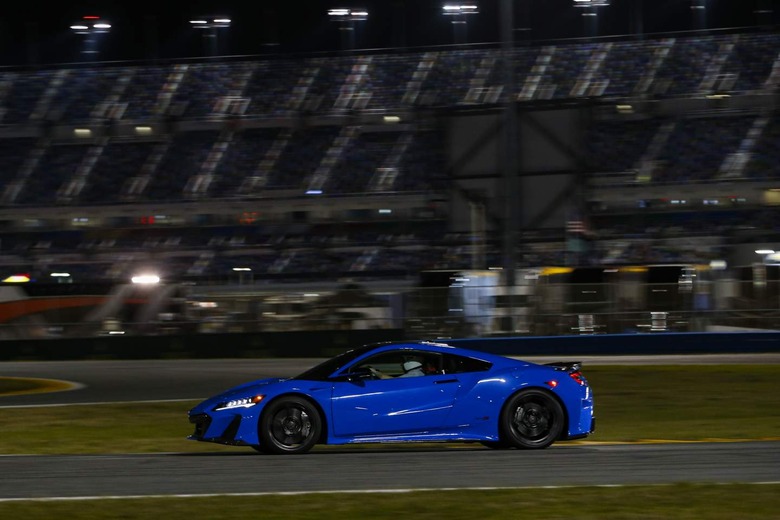
Not long after watching this sea change in Acura's appeals shift from logos to pathos, some Acura employees strapped me into a Type S and gave me two laps at Daytona International Speedway. I followed Honda TCR driver Ryan Eversley as he coached me through the 3.5 mile roval circuit with my pulse pounding in my ears and the lights of the most iconic American race track shining in my eyes.
I was feathering the line between excitement and terror until we'd finished the first out lap, trying to learn the corners, conscious mind in fight-or-flight territory and senses reeling all while I tried to gauge, in 3.5 miles on Daytona, if I could appraise its nature accurately enough for this story.
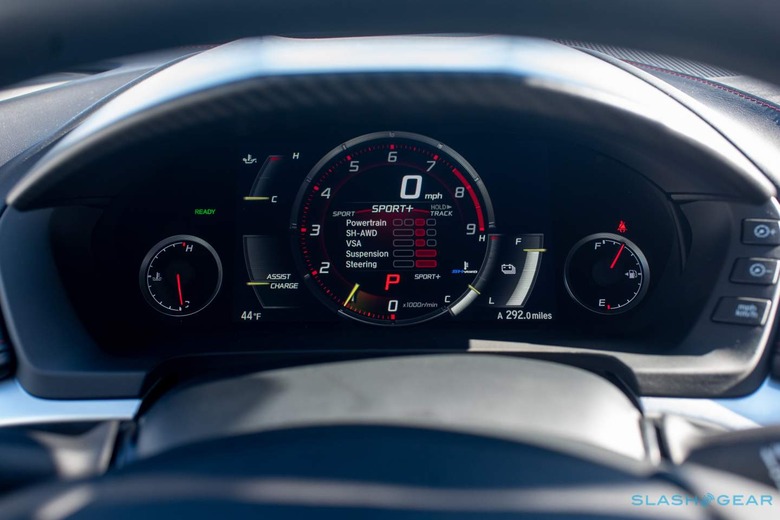
Then Ryan takes off and I lean onto the power and pursue, and all doubt clears from my mind. The car is still remarkably easy to drive at ludicrous speed – certainly vastly easier than anything else I've ever driven over the 500 HP threshold – and it inspires confidence within me I didn't think I had. Cross the start/finish, 135 miles an hour, a slight draft off the lead car in front of me on the least banked of the trioval's massive curves, and despite the motor screaming behind me and the lights turning to an unbroken blur the NSX remains utterly composed; the visceral sights and sounds of speed are all there but the fear is gone.
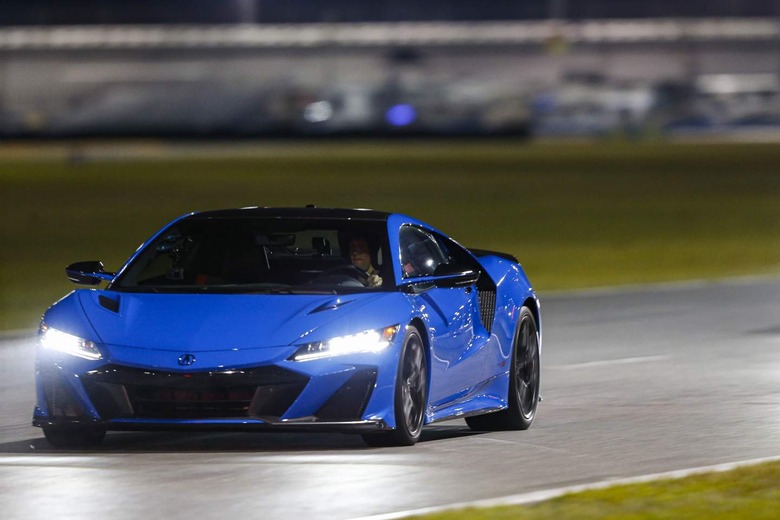
I stab at the massive fifteen-inch carbon-ceramic discs (one of the only options available on the Type S NSX) and the six-pot Brembos bite into them with ferocity. I can feel the rear end shift its weight and get a little lighter – not enough to be concerning, just enough to tell me where the limits are – and I pitch myself into Turn 1 as I attack the infield. The frontal visibility is excellent; I am not dodging and weaving through a sea of A-pillars trying to find apexes. I lock on and turn.
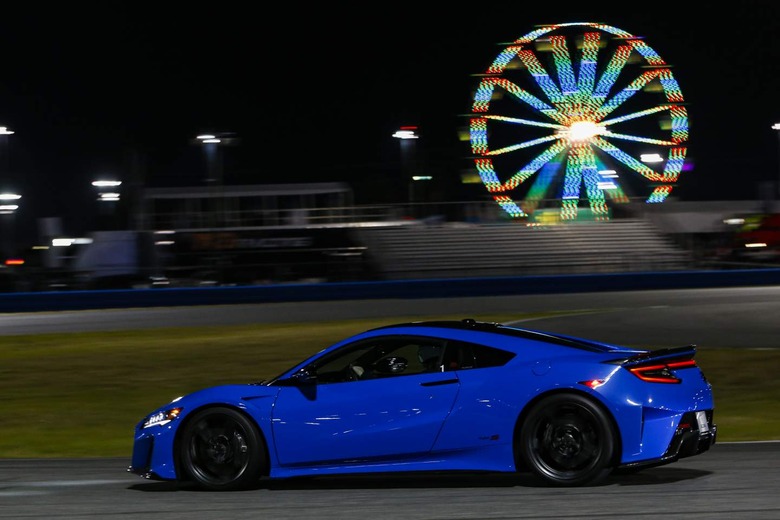
I roll onto the throttle as I pass the apex and the electric motors turn the NSX into a mountain goat of circuit racing; the three electric motors and the twin-turbo V6 are working in perfect unison. More importantly than how quick it is coming out of Turn 1, however, is that I feel like I am working in perfect unison with it. There is no driving-on-autopilot video-game experience that some modern supercars – the early versions of the NSX itself included – are prone to. The NSX Type S is smacking curbing at Daytona because it makes me feel like I am driving it well. It doesn't matter if I actually am or not (I am not) because despite the NSX's underlying churn of more computing power than the entire Shuttle program used in its lifetime, it seems like there's nothing going on behind the scenes from the driver's seat.
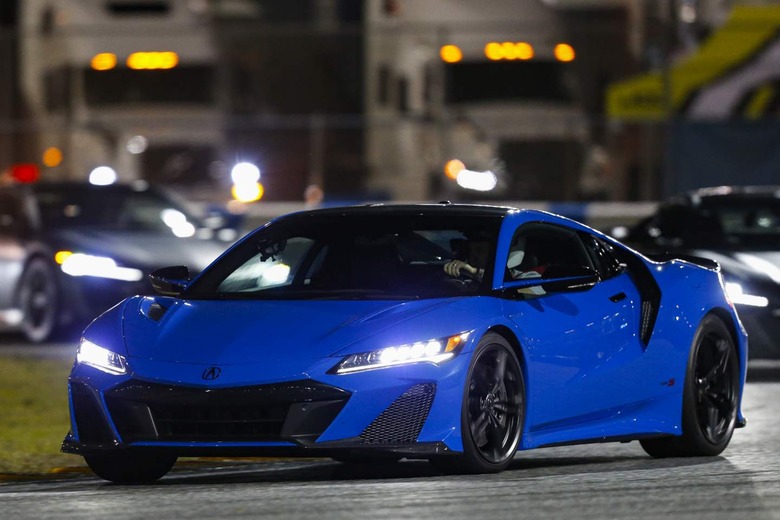
I hit the massive banks once again and tear towards the Bus Stop (it will never be the Le Mans Chicane to me; this is America) and swing left, then right, after bouncing over curbing at the fastest part of the track; this corner is genetically engineered to upset mid-engined cars. And yet it's fine, of course. In a typical MR car, I might ease up a bit, loose boost, and snap-oversteer myself into a tire wall. Here, it will tell me when I'm screwing up with a waggle of the tail and feedback from the wheel, but it won't kill me for my hubris.
If anything, my biggest complaint as I tear into NASCAR Turn 3 is that I know it has more in it. I want to push harder. It's just too good at this, and it makes me feel like I'm good at this, too.
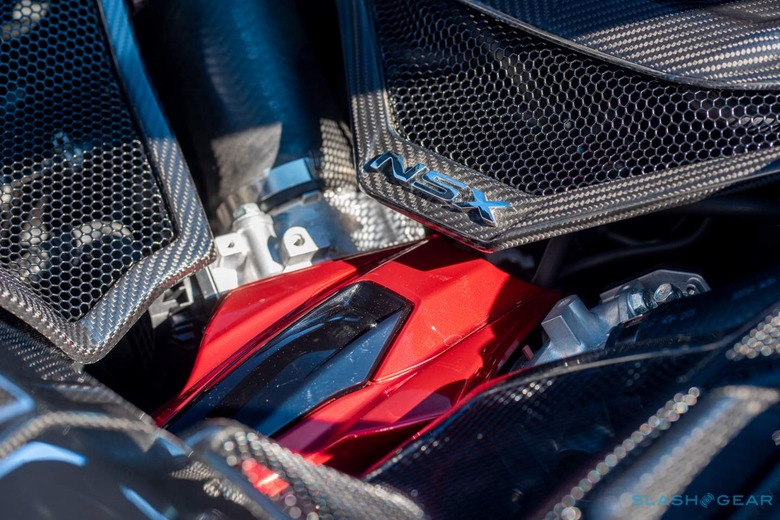
And then we pulled into the pits, and my seriousness faded to nervous giggles. I had not only survived first contact with Daytona; I'd actually gotten the NSX experience of my dreams. The original became a legend because it was so potent and well-tuned as to embarrass cars with twice the power, and yet it remained so friendly to a novice that anyone could feel intrepid on a track. Despite the advancements of tech and the complications of a hybrid drivetrain and all of the electronics that oh-so-true enthusiasts decry, I stepped out feeling like I had understood it perfectly. We worked in concert; it kept me shiny-side-up and I got to feel like I'd made it fast.
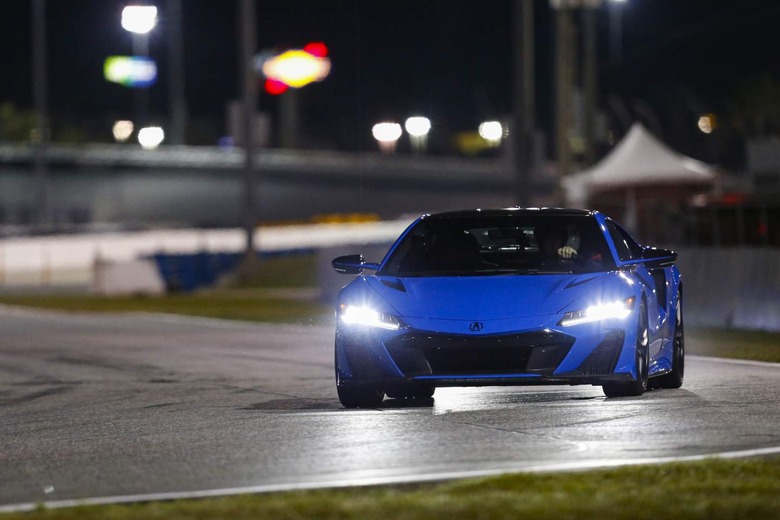
The new Type S NSX keeps all the best parts of driving a fast car fast (pure bliss) without the worst parts (generally, destroying a $165,000 car and a fiery, ignominious death). It's damn quick, damn composed, and good-looking. More important than any of this, Acura has finally remembered what made the original NSX so special and honed them in this final, ultimate edition.
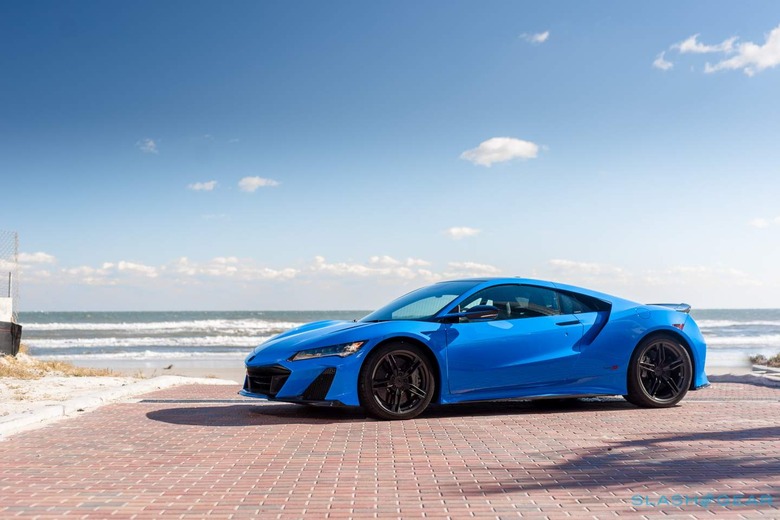
I call it the ultimate edition not because its shift times are milliseconds quicker or its turbochargers are 5% more powerful; it is the ultimate edition because it understands why I grew up dreaming of a track day in an NSX. Just like Chiaki's Story, cars are at their best when they elevate us, and the NSX made me feel like a hero for a night. Acura has understood its opus, and in doing so, rekindled the magic a second time.
